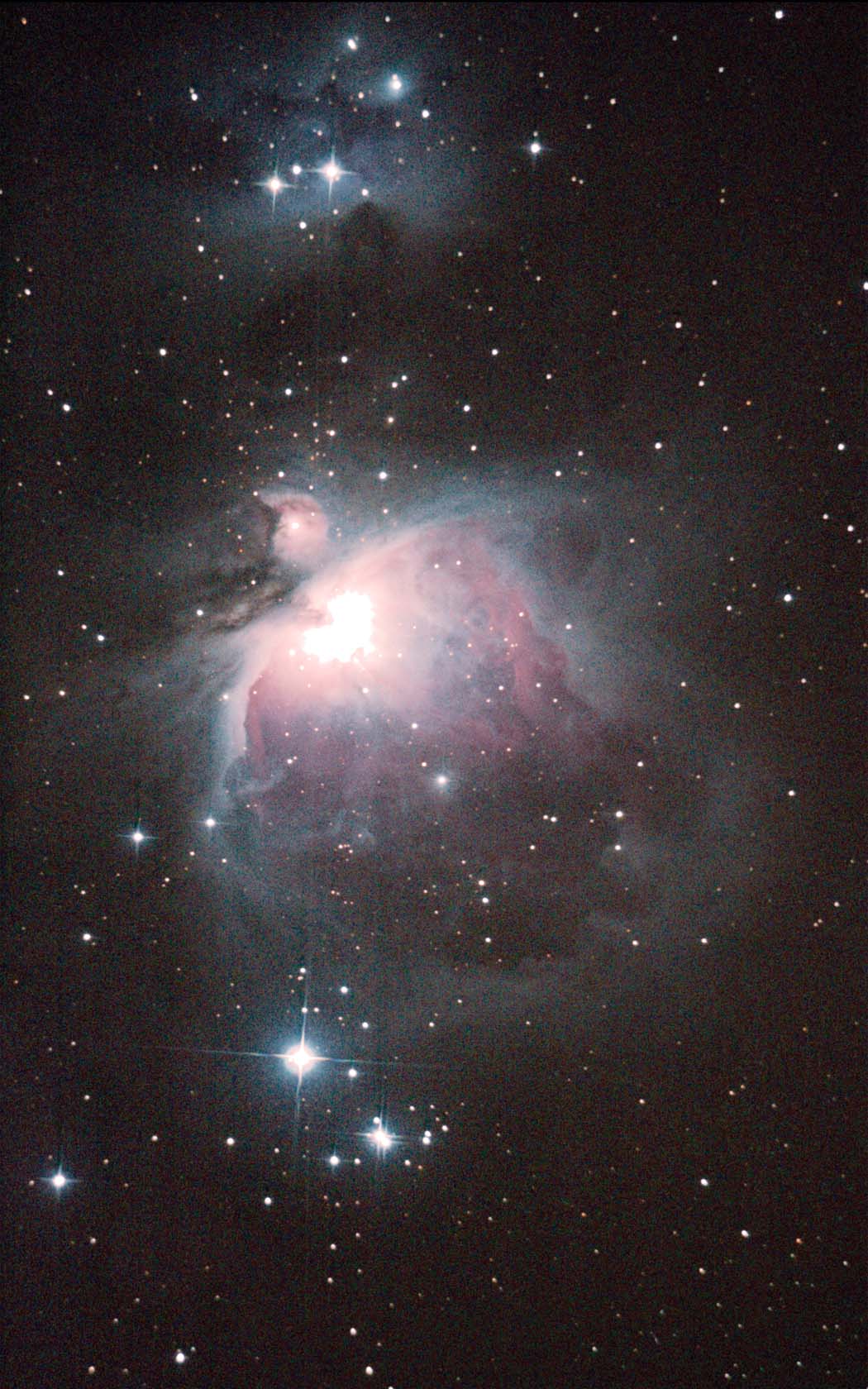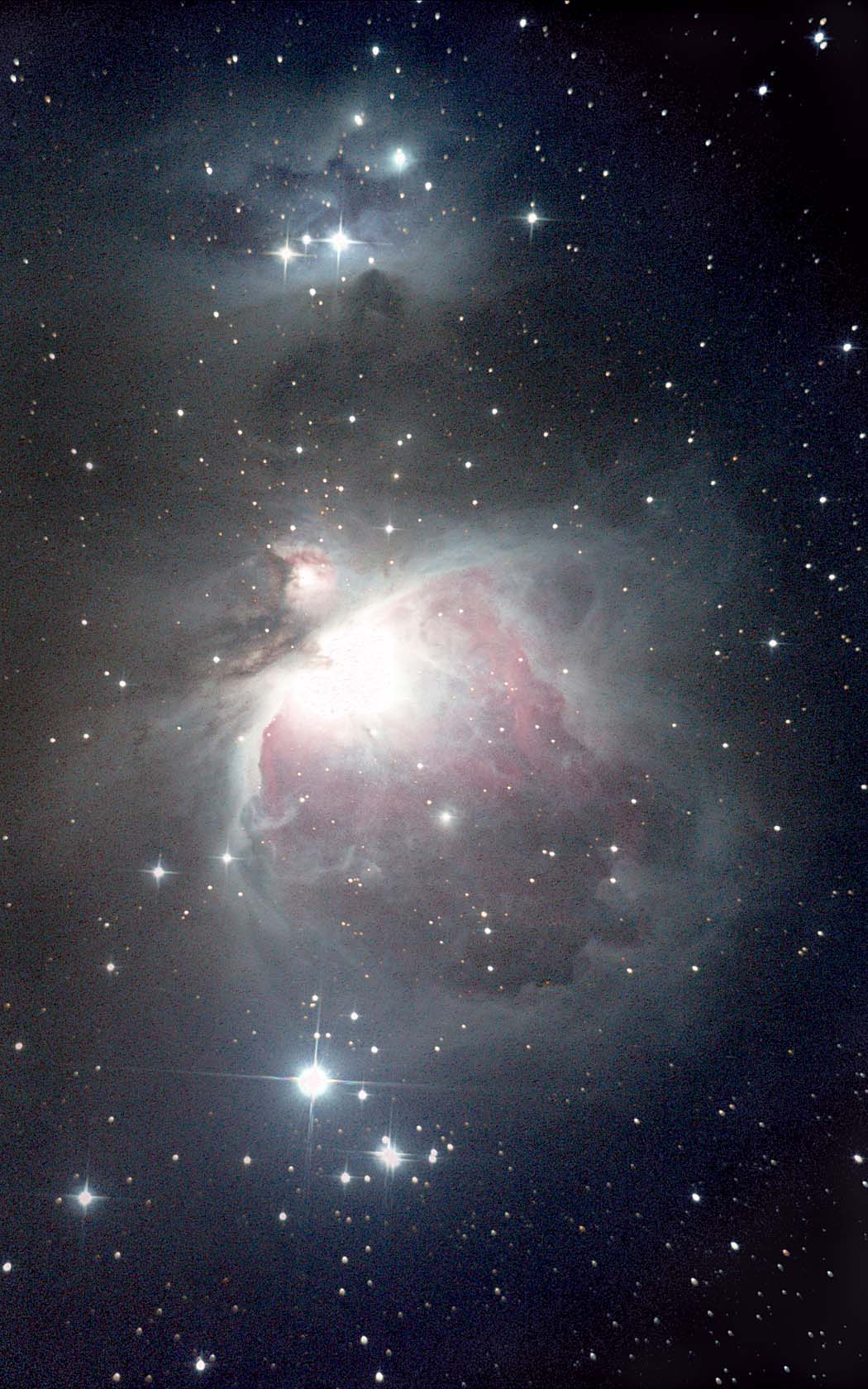
Conventional wisdom dictates that when imaging with a DSLR, telescope must be an apochromat, the exposures should be long, and you need to accumulate many hours of exposure. The object of this exercise was to bend the rules to learn what would happen.
For the image below, the telescope was a 6-inch Newtonian reflector telescope and individual exposures were a mere 30 seconds each using the Nikon D70's built-in noise-reduction feature. The image was made by combining 35 exposures.

The many short exposures used to make this image combine for a total exposure time of 17.5 minutes. The reason it worked in this case is that the Orion Nebula is one of the brightest deep-sky objects, the night was chilly so the dark current was low, and this particular Newtonian has been optimized for imaging. Furthermore, the image is shown at half size which hides some of its technical flaws. Still, it's not too bad for doing things the "wrong" way.
What happens when you break fewer of the rules?
For the image below, the telescope was the same 6-inch Newtonian reflector telescope, but this time the individual exposures were between 5 and 6 minutes each. I still used the camera's built-in noise-reduction feature. The image was made by combining three exposures.

The three longer exposures used to make this image combine for a total exposure time of 17.5 minutes. The night was chilly so the dark current was low enough to permit the longer exposures. Considerably more of the outer structures in the nebula are visible because the signal was much larger relative to the noise level of the camera's CCD chip.
Still longer exposures are not feasible because the brighter parts of the nebula are overexposed, and with 5 to 6 minutes exposure time, the exposure in the sky background is approaching one-third of full saturation, that is, in an exposure of 15 minutes, the sky would saturate.
Return to Richard Berry's Home Page